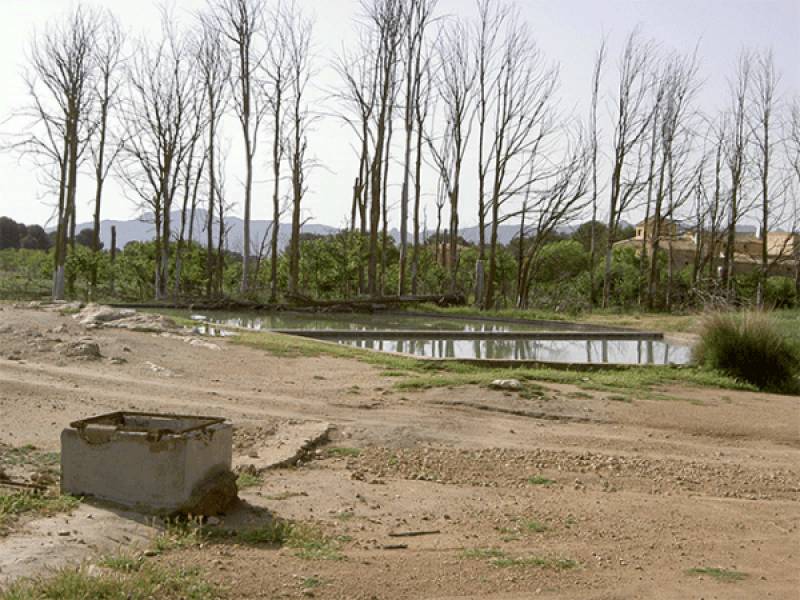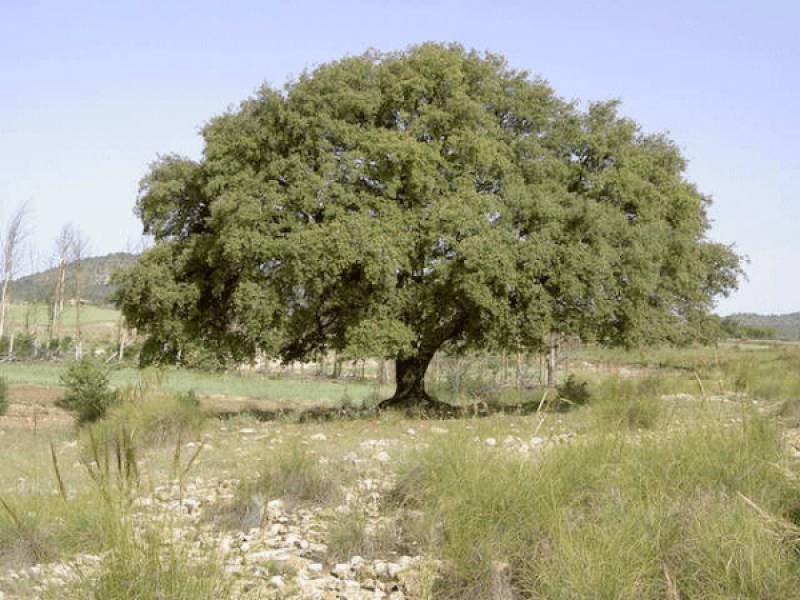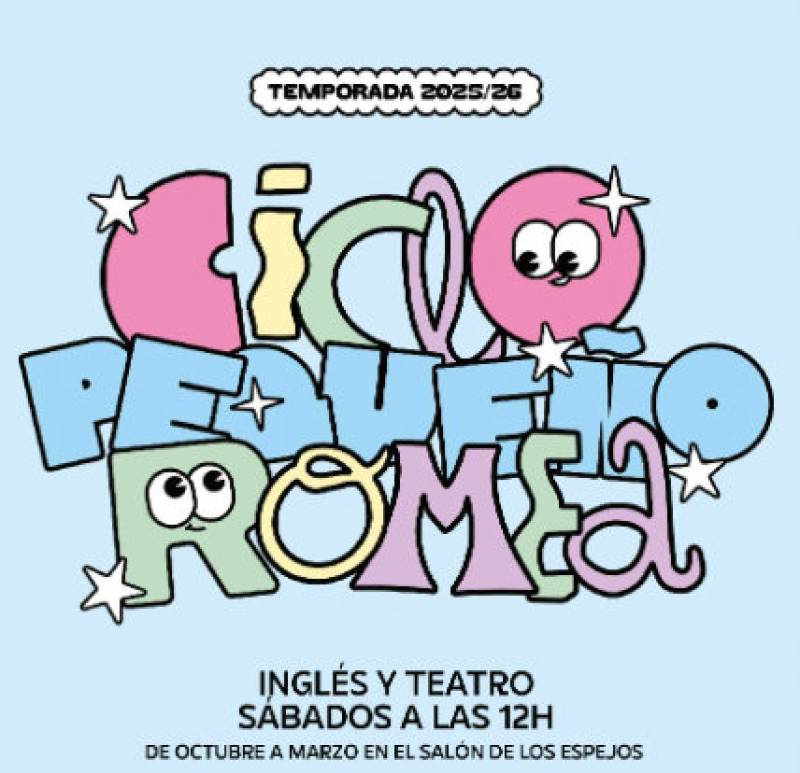
To be listed on the haciendadelalamo TODAY MAP please call +34 968 018 268.
The legend of Lady Eruvigi in La Fuente del Pinar in the Yecla countryside
A ghostly figure associated with death, revenge and the full moon
 The rural location of La Fuente del Pinar lies around 11 km north of the town of Yecla and is home to a natural spring (from which it takes its name) and the ruins of a Roman villa dating from the 1st and 2nd centuries AD.
The rural location of La Fuente del Pinar lies around 11 km north of the town of Yecla and is home to a natural spring (from which it takes its name) and the ruins of a Roman villa dating from the 1st and 2nd centuries AD.
However, it is also the source of the Legend of Lavy Eruvigi, a ghostly figure who was purported to appear on rainy nights when there was a full moon, and there are actually three versions of the story.
The first version of the legend is that the lady who owned the land, named Eruvigi, wanted to build a children’s hospital in La Fuente del Pinar, but she died one rainy night when there was a full moon. As she had been unable to fulfil her wish or promise, she could still be seen walking her dog along the paths around the area, but only on rainy evenings when there was a full moon.
This was partly due to the relatives of Eruvigi having refused to comply with her wishes and build the hospital, and the lady’s dog would attack those of them who had opposed the project, on some occasions even killing them.
 A second variant tells that a Count married Lady Eruvigi, the owner of la Fuente del Pinar, and it was he who refused to build it so that he could keep her fortune when she died. He even shut her in a room with no food and water, but before she passed away she placed a curse on him which would enable her to return on rainy nights with a full moon and eventually kill him in revenge.
A second variant tells that a Count married Lady Eruvigi, the owner of la Fuente del Pinar, and it was he who refused to build it so that he could keep her fortune when she died. He even shut her in a room with no food and water, but before she passed away she placed a curse on him which would enable her to return on rainy nights with a full moon and eventually kill him in revenge.
The third version of the myth is that Countess Eruvigi suffered from leprosy and during her illness she used to walk around the countryside in disguise, hiding her disfigured features with a sunshade to avoid causing feelings of repulsion among the locals and her acquaintances. However, one day a local shepherd recognized her and she felt obliged to kill him in order to maintain her condition secret.
On the spot of the murder she erected a wooden cross and after she eventually died she could still be seen there at times, wearing a white overshirt and carrying a candle as well as her sunshade. It is said that she was buried in the chapel of the Casa de la Fuente del Pinar.
For more local visiting information, events and news go to the home page of Yecla Today.
Oficina de Turismo de Yecla
In early 2025, due to renovation work at the usual office, the service is located on the other side of the Plaza Mayor at Calle Epifanio Ibáñez nº 2 (click for map).
 Yecla is a large municipality in the north of the Region of Murcia, home to just under 35,000 people, and these days is best known for its wines, which enjoy Denomination of Origin status, and its furniture production, which has its origins in the abundance of pine trees on the mountainsides and the high plateaux.
Yecla is a large municipality in the north of the Region of Murcia, home to just under 35,000 people, and these days is best known for its wines, which enjoy Denomination of Origin status, and its furniture production, which has its origins in the abundance of pine trees on the mountainsides and the high plateaux.
 While visitors in the 21st century may be attracted primarily by wine tourism, the town (or city, as it was proclaimed in 1878) also has a wide historical, cultural and natural heritage, and an identity quite different from the coastal areas of the Region of Murcia. For this reason it is often grouped together with its neighbour and fellow wine-producing area Jumilla as part of the Altiplano area.
While visitors in the 21st century may be attracted primarily by wine tourism, the town (or city, as it was proclaimed in 1878) also has a wide historical, cultural and natural heritage, and an identity quite different from the coastal areas of the Region of Murcia. For this reason it is often grouped together with its neighbour and fellow wine-producing area Jumilla as part of the Altiplano area.
Yecla borders with Castilla-La Mancha and the Region of Valencia and is closer to Alicante coastal areas than much of Murcia. These visitors come to see the historic old town itself - an atmospheric and interesting place, crammed full of history - the natural beauty of Monte Arabí, with stunning views for those who enjoy the outdoors, the gastonomy and of course the wine route.
 Yecla boasts cave paintings from 10,000 years ago in Monte Arabí, a Bronze Age settlement at El Arabilejo, Iberian remains in El Pulpillo and a Roman administrative centre at Los Torrejones as well as the remnants of the 11th century Moorish castle on the hill behind the town. More modern (and complete) testimony to the past are the buildings in the town centre, which include the grandiose Basílica de la Purísima, with its striking blue dome, the archaeological museum and the attractive Plaza Mayor, where the 16th century Town Hall stands alongside the Renaissance Casa de los Alarcos, the clock tower and the old grain store.
Yecla boasts cave paintings from 10,000 years ago in Monte Arabí, a Bronze Age settlement at El Arabilejo, Iberian remains in El Pulpillo and a Roman administrative centre at Los Torrejones as well as the remnants of the 11th century Moorish castle on the hill behind the town. More modern (and complete) testimony to the past are the buildings in the town centre, which include the grandiose Basílica de la Purísima, with its striking blue dome, the archaeological museum and the attractive Plaza Mayor, where the 16th century Town Hall stands alongside the Renaissance Casa de los Alarcos, the clock tower and the old grain store.
 The tourist office holds a full selection of leaflets, maps, pre-planned routes, accommodation and restaurant options and information about visiting Yecla for both individuals and groups.
The tourist office holds a full selection of leaflets, maps, pre-planned routes, accommodation and restaurant options and information about visiting Yecla for both individuals and groups.
There is parking close to the tourist office, although those driving to Yecla for the first time are advised to park in Calle Perales.
For further information go to the home page of Yecla Today.
Opening hours:
Tuesday to Friday 8.00 to 15.00
Saturdays 10.30 to 14.00 and 17.00 to 19.30.
Public holidays 10.30 to 14.00
Click for map, Yecla tourist office







































